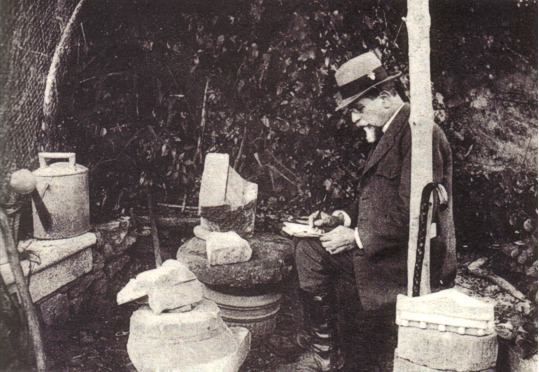When we talk about Cirò Marina, the first thing that comes to mind is the DOC wine that is produced in that area. It was the Greeks who, due to the fertility of the land, called the whole of Calabria “Enotria”, that is, land where vines are grown. Some types of vines still present in Calabria are of Greek origin, such as Gaglioppo and Greco Bianco. But Cirò Marina is also remembered for the ancient Hellenic city which was: Krimisa. In this city there was the temple dedicated to the god Apollo Aleo.
According to the myth, Philoctetes, famous archer from Thessaly, returning from Troy after the victory of the Greeks against the Trojans, arrived in southern Italy. Here he wandered for a long time and right in the area of today’s Cirò Marina he founded the city of Krimisa, consecrating a temple to the god Apollo, called Aleo. This name comes from the Greek word “alàomai” and means to wander, just as Philoctetes wandered in Southern Italy for a long time.
The discovery of the temple
In the 1920s, on the promontory of Punta Alice, some bricks and rough-hewn stones were discovered during the works to drain the ponds, which had made the coast unlivable. Having informed the famous archaeologist Paolo Orsi of this, the excavations for the discovery of the temple began on 18 April 1924.
The temple was built in two stages. In the late archaic period, late 6th century BC, the building had a narrow and elongated plan, the cell open at the front and wooden peristasis. At the beginning of the 3rd century BC a peripteral Doric building (8 x 19 columns) was built.

According to the archaeologist Orsi, the temple was destroyed during the Second Punic War. During the excavations, the marble head of the acrolith and its feet were found. The acrolith was a statue formed by the head, hands or arms and feet in stone, marble or ivory, while the body was formed by a support structure of poor quality material, covered with fabric, where the sculpted parts were attached. The holes on the head and feet were used to hold the bronze wig and sandals.


During the excavations led by Orsi, numerous votive offerings were found, including a small gold foil statue depicting Apollo with bow and patera. According to tradition, Philoctetes dedicated his famous bow mentioned in the Iliad to Apollo. The finds found in the archaeological area are scattered among some Calabrian museums. In particular in the National Museum of Reggio Calabria, in the State Museum of Crotone and in the Cirò Marina Museum. (Silvana Franco)










